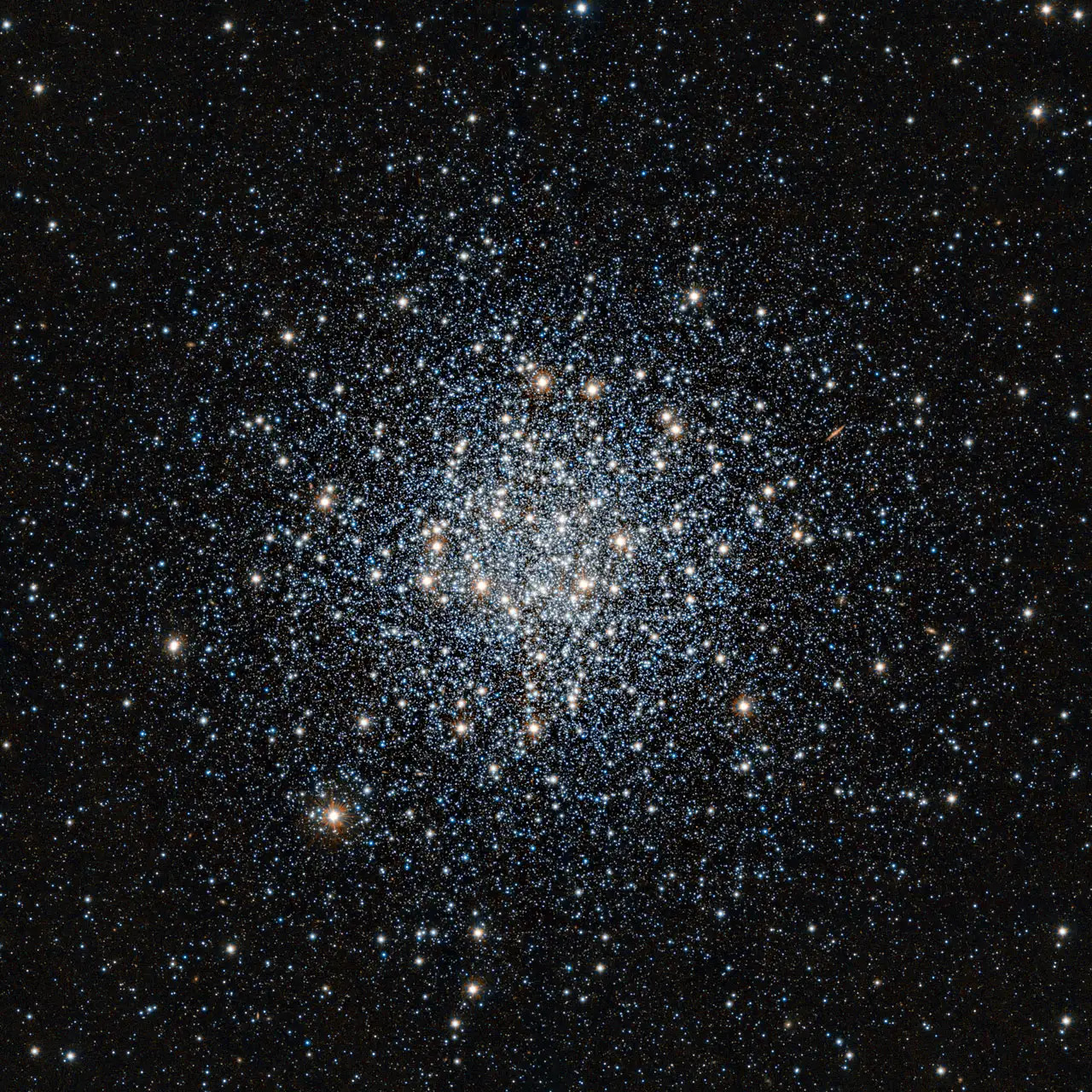Globular clusters, which consist of a few hundred thousand stars, are contained in a ball that is a few hundred light-years wide at most. They are very dense groups of spherical stars that orbit the cores of galaxies. They played an important role in astronomy when, beginning in 1914, Harlow Shapley began using globular star clusters revolving around the Milky Way to determine the size of the galaxy and the position of the Sun within it. In 1918 he finally achieved the desired result.
In the case of the Milky Way, there are 158 globular clusters now known, but there are likely to be 10 to 20 times that many. It is known that they consist mostly of stars that are at least 10 billion years old and have reached a similar stage of development. Being poor in metals, in astrophysical parlance, elements heavier than hydrogen and helium, these stars must have formed at the same time and contemporaneously with the oldest stars in the galaxy. One of the most famous globular clusters is Hercules (M13), to which the famous Arecibo message was sent in 1974.
The broad steps of galaxy formation in the universe are known, but there are variables in the details and in the observations that show that much remains poorly understood. Many more detailed scenarios are being studied, including through numerical simulations such as the MareNostrum simulation.
However, it seems clear that globular clusters of galaxies formed very early in the history of the observable universe from super densities in primordial clouds of hydrogen and helium gas, just like the first galaxies more than 13 billion years ago. So one can assume that they are somehow fossils from this early period. Unlike galaxies, which have undergone many collisions and mergers, in addition to undergoing significant chemical evolution dominated by supernova explosions, globular clusters must retain a more vivid memory of galaxy formation.
Editor: Futura.
Cover photo: © ESO, J. Emerson, Vista, Cambridge Astronomical Survey Unit – This beautiful view of globular cluster Messier 55 in the constellation Sagittarius was captured in infrared light using the VISTA telescope for surveys of the universe at ESO’s Paranal Observatory in Chile. The large ball of ancient stars is about 17,000 light-years from Earth

“Subtly charming coffee scholar. General zombie junkie. Introvert. Alcohol nerd. Travel lover. Twitter specialist. Freelance student.”







More Stories
Data Leakage: Android TV can expose user's emails and files
How did life begin on Earth? Munich researchers find important clues
The “One-Man-Show” Next-Gen Update shows how to please players